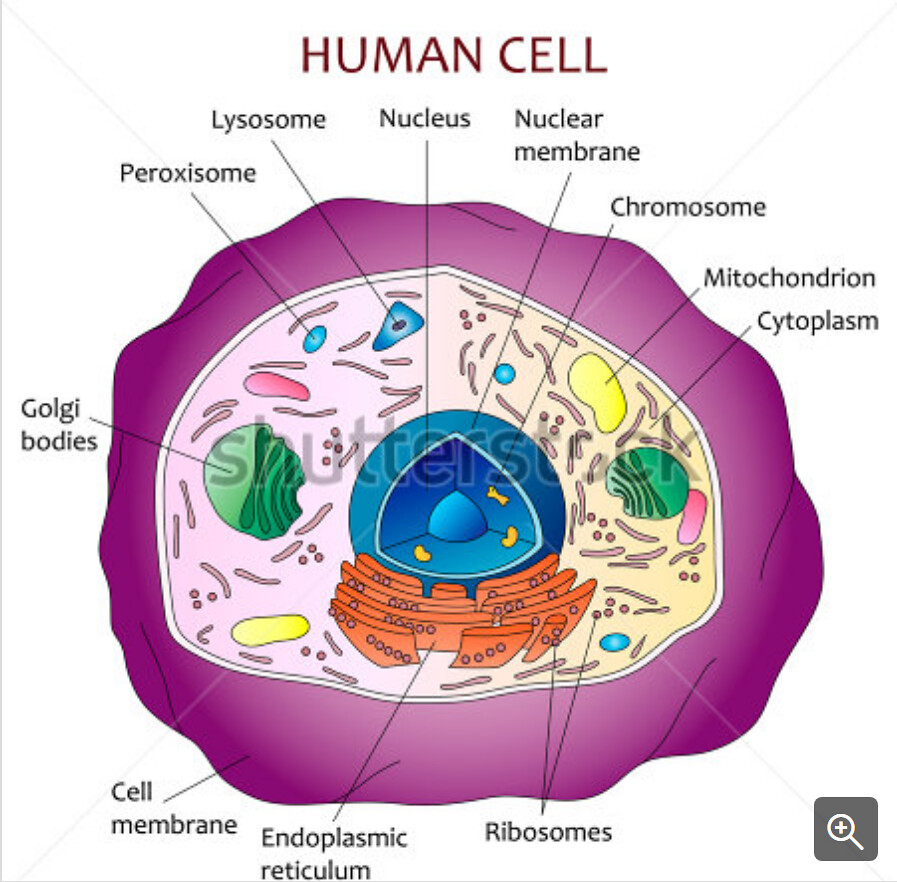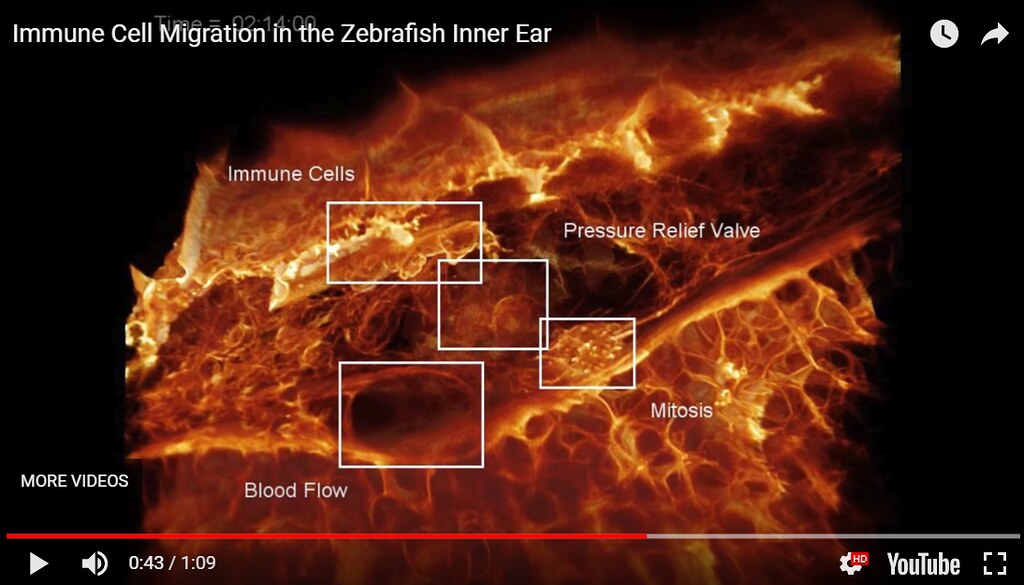Source: Shutterstock
Technology has brought advances that were previously unheard of just a couple of decades ago. One of which is the ability to look inside of a cell. Yes, a cell. Think of your biology class with the posters or charts on the wall with life size versions of the inner components of the cell which reside at distances on the nanoscale. The following video shows an assortment of biological occurrences all happening at once - in real time:
Awesome. What might appear to be a vibrating structure is actually the unveiling of multiple cellular processes at work simultaneously. Here at around 48 seconds into a minute long video (1 minute 9 seconds in total length), the authors highlighted three processes as shown in the still image taken from the video above and shown below:
In addition to the migration of an immune cell around the membrane, the video allows us to see the actual blood flow (by viewing the vibrating wall of the vessel) along with the area where mitosis is occurring. The ability to view events like those shown above in the video would have been unheard of just a decade ago. Although, the speculation of viewing the cell has been around for quite a while. The difference in speculation and ability is the rate of the advancement of technology.
Videos such as the one shown above will become more common place as the technology is developed further. At present, animated videos of the cell (and other science topics) are emerging everywhere. The level of complexity depends on the type of software used to develop the video. Virtual reality will play a larger role in the future with tutorials and accessible video content that is also interactive for students. Compare the video above which is real to the video that is becoming more of a common place in today's science communication era:
Each type of video has their strengths and weaknesses. In the future, classrooms should have each type of video incorporated into the curriculum to allow students to translate 'frozen' or 'static' images in textbooks into real life images.
Conclusion...
Just a few decades ago, 'static' images of the various scientific processes were being unveiled which greatly expanded the ability to reach audiences both inside and outside of the field of science. Images which enriched our understanding of the process by which research and development is carried out with. These capabilities form a stronger bridge to connect us with science. Additionally, the videos above are an exciting development for scientists who aim to teach the public about science (like myself). This technology makes my life easier and provides a visual aspect which I might have great difficulty translating to an audience. As anyone can see, 'a picture is worth a thousand words.'
Related Blog Posts:
Parameters: 3D Printed Human Hearts?
Chemistry Reactions Are Amazing - See For Yourself


No comments:
Post a Comment